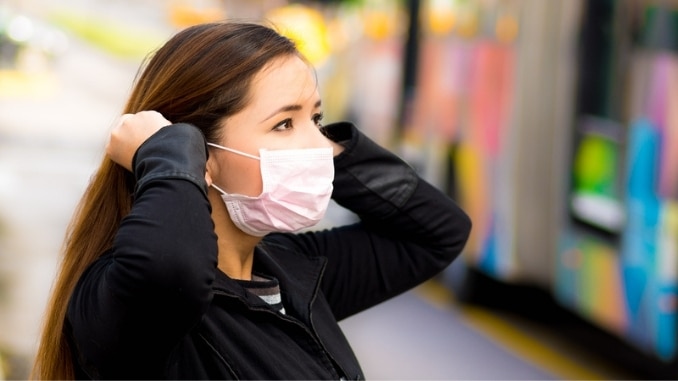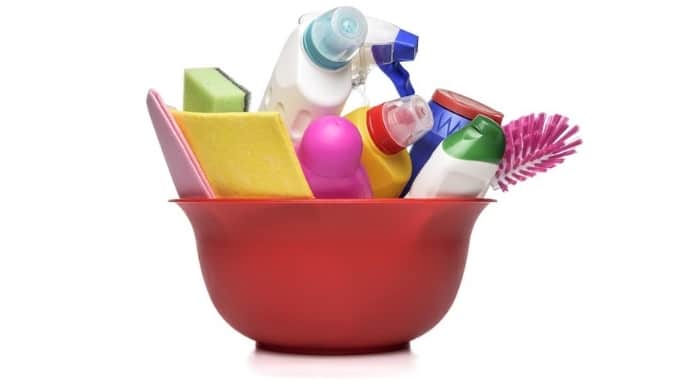
The quality of the air inside your home might not be something you think about every day.
Often, when we think of air pollution, images of rush-hour traffic and smokestacks come to mind. While there are certainly plenty of dangerous pollutants outside, researchers at the United States Environmental Protection Agency (EPA) have found that the air inside our own homes ― both in rural and urban settings ― may be 10 times more polluted than the air outside.
Improving the quality of your indoor air is more important now than ever. Today, many people spend 90 percent of their days indoors. Our homes are built for maximum energy-efficiency, which often means they are sealed up tightly so that the heating and air conditioning systems can perform better.
We spend so much time inside our homes that we want them to be lovely. Walls are painted, carpets and floors are replaced and new appliances installed. We buy cleaners, disinfectants and air fresheners to take good care of our interiors. Each of these ways that we improve and care for our homes may come with potentially hazardous chemicals known as volatile organic compounds (VOCs). According to the EPA, VOCs are gasses emitted from certain liquids or solids that include a range of chemicals that can have both short and long-term effects on our health.
Here are some of the most common sources of VOCs, which cause indoor air pollution:
- Aerosol spray
- Household cleaners and disinfectants
- Interior and exterior paint
- Paint stripper, thinner and any solvent
- Wood stain and finish
- Air fresheners
- Mothballs
- Adhesives and art and hobby supplies
- Automotive supplies
- Clothing that has been dry cleaned
- Insecticides and pesticides
- New household furniture
- New flooring, carpeting, and rugs
- Office supplies, printer cartridges, and permanent markers
- Cigarette smoke
- Burning candles
- Fireplaces
- Heating and air conditioning systems
- Personal care products
- Pet care items
How to Improve Your Indoor Air Quality
If this laundry list of indoor pollutants is a bit overwhelming, don’t worry. There are some simple steps you can take to improve the quality of your indoor air dramatically. By the way, your wonderful-smelling laundry soap could be an issue. Here’s our advice:
Get Rid of Toxic Household Chemicals
Let’s start with the cabinet under your kitchen sink. How many random bottles of multisurface cleaner are sitting under there? What about toilet bowl cleaners and degreasers? While they may seem like necessary evils, chemical household cleaners can be replaced easily by simple, non-toxic formulas that work. We aren’t suggesting you rush out and spend $16 on a bottle of ultra-natural organic countertop cleaner made with untouched dolphin tears and European rainwater. Instead, you may likely have the ingredients right in your pantry to make potent, natural cleaners without the chemical pollutants.
Try a couple of these easy homemade, nontoxic cleaners.
Multisurface Cleaner
Ingredients
- 1 cup water
- 1 cup white vinegar
- 10 drops essential oil (optional)
- Spray bottle
Directions
Combine the water, white vinegar and essential oil in a spray bottle. Shake gently to mix and use this to clean countertops, bathrooms, appliances, and other surfaces. This is also an excellent solution for mopping tile floors. Lavender or orange essential oils work well with this cleaner.
Lemon Degreaser
Ingredients
- 1 cup hot water
- 1 tablespoon baking soda
- 1 teaspoon liquid castile soap or liquid dish soap
- 10 drops lemon essential oil
- Spray bottle
Directions
Combine the hot water, baking soda, liquid soap and essential oil in a spray bottle. Shake the solution until the baking soda is dissolved fully. Use this for cleaning greasy appliances and cooking surfaces.
Toilet Bowl Cleaner
Ingredients
- 3 tablespoons liquid castile soap or liquid dish soap
- 1 cup hot water
- 1 tablespoon baking soda
- 10 drops tea tree essential oil
- Squeeze bottle (empty dish soap bottle will work)
Directions
Combine the liquid soap, hot water, baking soda, and essential oil. Stir the solution until the baking soda is dissolved fully. Pour the solution into a squeeze bottle and use this cleaner as you would any toilet bowl cleaner. Squirt the cleaner beneath the rim and allow it to sit for 10 to 15 minutes before scrubbing. Then flush as needed.
Other Household Toxins
If you’re storing half-empty paint cans under the stairs or in your garage because you aren’t sure how to dispose of them, make today the day to get rid of them. Most paint and hardware stores will take your paint and dispose of it properly. Otherwise, contact your local waste management company to get the skinny on how to dispose of it yourself. In general, you can’t toss it in with your other trash.
Chemical pesticides to keep bugs out of your home are handy. However, they are extremely toxic. There are more natural ways to keep your home less attractive to creepy crawlers.
Ant Repellent
Ingredients
- 2 cups hot water
- 2 teaspoons ground cayenne pepper
- 10 drops lemon or orange essential oil
- Spray bottle
Directions
Put all ingredients into a spray bottle and shake until all of the ground cayenne is dissolved. Spray in the areas where ants have been congregating.
Clove Essential Oil
Clove essential oil is excellent for repelling house flies and fruit flies. Add several drops to your homemade countertop cleaner or mix clove oil into the water and wipe down surfaces.
Cedarwood Essential Oil
There aren’t many pests that cannot be repelled by cedar. The essential oil derived from cedar is a wonderful, natural pesticide. Use it when you mop your floors. Apply a few drops to a cloth and wipe down doorways and windowsills with it. Using cedarwood essential oil is a very effective way to keep bugs and pests away from your home.
Use Cost-effective Unscented Cleaning and Household Detergents
When you’re buying laundry soap and other cleaning supplies, choose the varieties with the least toxic chemicals and no perfumes. The Environmental Working Group rates household products on their website. Check with groups like this to see if your favorite soap is loaded with chemicals.
Overall, avoid air fresheners and fabric sprays. These types of products contain all sorts of toxins. Instead, use a cup of baking soda with a few drops of essential oil to freshen up a room. Place the cup in the middle of your counter for a few minutes to eliminate odors. You can also sprinkle baking soda onto your carpets and vacuum it up. Both methods will keep your home smelling fresh.
Bring in Some Air-purifying Plants
There are certain houseplants that can filter and purify the air in your home. The U.S. National Aeronautics and Space Administration (NASA) published the Clean Air Study, in cooperation with the Associated Landscape Contractors of America. They found that there are a number of plants that remove toxic chemicals like benzene, formaldehyde, and trichloroethylene from the air.
Using the findings from NASA and other similar research, we’ve compiled a list of some of the plants that are most effective at removing toxins from the home. Many of these are low-commitment, easy-care plants. Several of them will thrive in only a jar of water on your countertop.
- Red-edged dracaena: Also known as the Madagascar dragon tree, the red-edged dracaena is a lovely potted tree that requires very little maintenance. It’s a pretty plant that can grow quite large. The red-edged dracaena has been found to remove formaldehyde, benzene, toluene, xylene, and trichloroethylene from indoor air.
- Potted chrysanthemum: Chrysanthemums aren’t always a favorite in fancy flower arrangements. However, potted mums are some of the best air-purifying plants you can find. These remove all of the toxins that the dracaena removes plus ammonia.
- Peace lily: Similar to the potted chrysanthemum, the peace lily eliminates a large share of indoor toxins. Peace lilies are lovely and easy to maintain.
- Variegated snake plant (also known as mother-in-law’s tongue): For the record, we are not anti-mother-in-law. We’re not quite sure how this plant with sword-like leaves got its name. But, mothers-in-law everywhere should be honored. On top of eliminating all sorts of toxic chemicals in the house, the mother-in-law’s tongue is one of the lowest maintenance houseplants around. Some say you can completely ignore the plant for a month, and it’ll be fine.
- English ivy: English ivy is excellent at removing in-home toxins. It’s also easy to keep alive. One fantastic thing about English ivy is that you can grow and maintain it in a jar of water instead of potting soil! That means you don’t have to remember to water it. Fill the jar every few weeks.
- Spider plant: Spider plants are particularly efficient at removing formaldehyde from the air. They are easy to maintain in soil and can also live in water.
- Pothos: Pothos plants are hard to kill. They are in the philodendron family. These plants love eating up the formaldehyde in your home and need only a jar of water to live. They can also survive quite well in rooms that don’t get sunlight.
- Flamingo lily: Flamingo lilies may not be as easy-care as some of the other plants on this list, but they are certainly good at removing ammonia xylene and formaldehyde from your indoor air. These beauties prefer a lot of good moisture.
Bring Some Fresh Air Inside
Another way to improve your indoor air quality is to throw open the windows and let the air circulate a bit. When it’s cold outside, leave your windows open for a few minutes a day. On days when the weather is nice, leave your windows open as long as possible. One of the reasons our air is so polluted at home is that our homes are sealed up. The toxins hang around and get comfortable. Opening up the windows is an easy way to eliminate harmful pollutants in the air.
Improve Your Indoor Air Quality
Before you consider buying some expensive gadget that claims to clean and purify your indoor air, try eliminating some of the VOC-emitting compounds in your home. Stop by the local nursery to pick up a few air-cleaning houseplants. Open your windows and breathe in the fresh air. Improve your indoor air quality so that you have a healthier place to call home.
Our environment has an enormous impact on our health, as does what we put into our bodies. For your guide to the best foods to heal your body, check out The Best Foods that Rapidly Slim & Heal in 7 Days, here!





